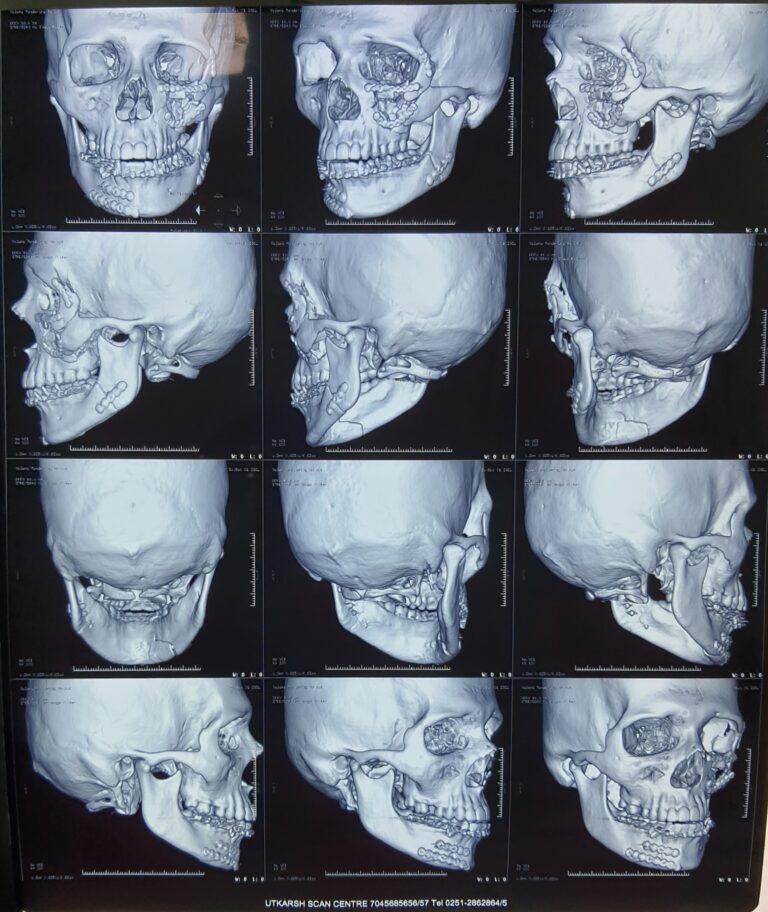Maxillofacial Trauma Reconstruction
About Maxillofacial Trauma Reconstruction

Pan facial fractures

After Surgery
Whether it’s due to a car crash, physical violence, or another life-threatening incident, serious facial trauma can happen in an instant. For most patients, this trauma is treated soon after the incident, and they can receive care at the closest facility. But despite the best efforts of the trauma team, you may still have facial disfigurement after surgery. Fortunately, further care can improve your appearance. Post-traumatic facial reconstruction may be able to restore your face to a normal condition.
Virtually all post-traumatic facial reconstruction involves repairing soft tissue injuries using stitches.
If any bony injury to the facial skeleton,the facial fractures are fixed.
With the assistance of microsurgery techniques, facial nerves, salivary glands, and salivary ducts may also be treated.
What to expect?
During the procedure, your facial bones, tissues, blood vessels, and nerves may be cut and moved using a variety of surgical techniques. Other parts of your body may act as donor sites where bones or tissues may be taken to be used in the face. It may take additional time for more complex cases. Generally patient is discharged after 2-3 days. Diet is advised accordingly.
Risks
- Allergies to tape, suture materials and glues, blood products, topical preparations, or injected agents.
- Anesthesia risks.
- Bleeding (hematoma).
- Change in skin sensation.
- Infection.
- Injury to the blood vessels, nerves, or tendons.
- Pain, which may persist.
- Poor healing of incisions.
- Possibility of revisional surgery.
- Skin contour irregularities.
- Skin discoloration/swelling.
- Unexpected swelling.
- Unfavorable scarring.
